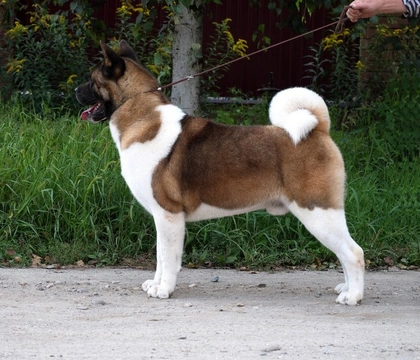
How come there are so many different variants of dog fur types and textures?
Different breeds of dog often look vastly different from each other, and when you compare two very different breeds side by side – like the French bulldog and the Japanese Akita, for instance – it can be difficult to appreciate that such different animals are the same species, and have more in common than they do apart.
As well as the obvious differences between dogs such as physical size, conformation, colour and gait, the length, density and texture of the coats of individual dogs can often be very different from each other too, sometimes even within dogs of the same breed.
Dog coat types come in a huge variety of lengths from very short to long and flowing, textures from smooth to rough to broken, curly or wavy, and dog coats can also be single-layered, possess an undercoat, or be comprised of more than two different types of hair all within the same coat.
If you have ever wondered how come there are so many different types of dog fur coats that can be seen across recognised pedigree dog breeds and why there is so much variance from dog to dog, this article is for you. Read on and we will explain the various different factors that contribute to causing different coat styles in dogs, and how this presents in our own pet dogs.
How evolution dictates a dog’s natural coat
Dogs have evolved naturally across many different regions of the world, ranging from hot, dry and arid areas to cold, inhospitable regions that spend much of the year blanketed in a thick layer of ice and snow. This means that dogs who originated from regions with a certain type of weather and conditions will tend to have coats that are very different from dogs that hail from a different type of climate, and this is thanks to evolution.
Different types of coats are required to cope with the conditions of different environments – after all, a dog with a fine, short, single-layered coat would not survive for long in a very cold climate. This means that native dog breeds from certain regions and landrace and other wild dogs that are native to certain areas have evolved with the right type of coat for the weather.
As you might expect, dogs that come from cold, harsh climates have the thickest coats, and such coats are often complex, consisting of a top layer of longer, harsher guard hairs that help to resist the wind and cold, with a thick, dense and fluffy undercoat beneath this to trap warmth next to the body.
Dogs from warmer countries will tend to have thinner, finer coats to help them to keep cool, and to ensure that they don’t overheat when the weather is at its warmest.
Genes and coat types
Your dog’s genes dictate what type of coat they will have, and this depends on the combination of genes that they inherit from both sides of their parentage. If both of your dog’s parents have similar types of coats (as tends to be the case within most pedigree breeds) this will tend to be reflected in their offspring.
However, some dog breeds can have two or more different coat types recognised within their breed standards – such as the Jack Russell, which may have either a rough, smooth, or broken coat, or the Chinese crested, which can either be furry or hairless.
In some breeds, the coat type produced in any given dog might be different from that of both of their parents, as the way that the two sets of inherited genes work in combination with each other is what dictates the coat produced.
Additionally, naturally occurring gene mutations can result in anomalous, unusual or new coat types developing in individual dogs or breed lines, and if the breeders of such dogs deliberately choose to try to replicate this coat type by breeding from these dogs, this can form the foundation of a new coat variant too.
Selective breeding and coat type traits
Selective breeding is the term used to describe the process by which dog breeders decide which dogs to breed from, choosing dogs for specific traits in order to replicate them in subsequent litters and potentially, to breed out less desirable traits too. This can apply to all manner of physical and temperament traits, not just the coat.
Selective breeding can help to introduce or spread a new coat type or reduce occurrence rates of other coat types. This relates to both coat textures and colours, and some coat types are considered to be very desirable in some dog breeds and types, and so are widely chosen for selective breeding programs.
Perhaps the best example of this can be found in the poodle coat, which is very low-shedding and tightly curled, making dogs with this type of coat particularly popular with people who commonly suffer from allergies to pet dander. Hybrid dog types like the Cockapoo and Labradoodle are generally most in demand when they have a poodle-type coat, and producing this type of coat relies upon selective breeding to achieve it.
All of these factors help to dictate what type of coat any individual dog will have, and may even help to explain their origins too!



